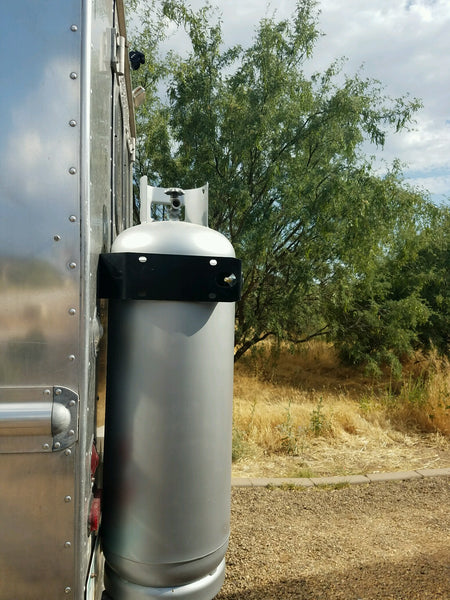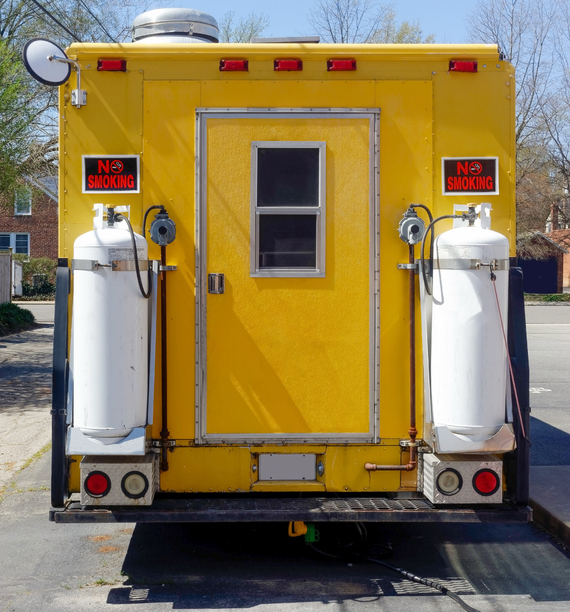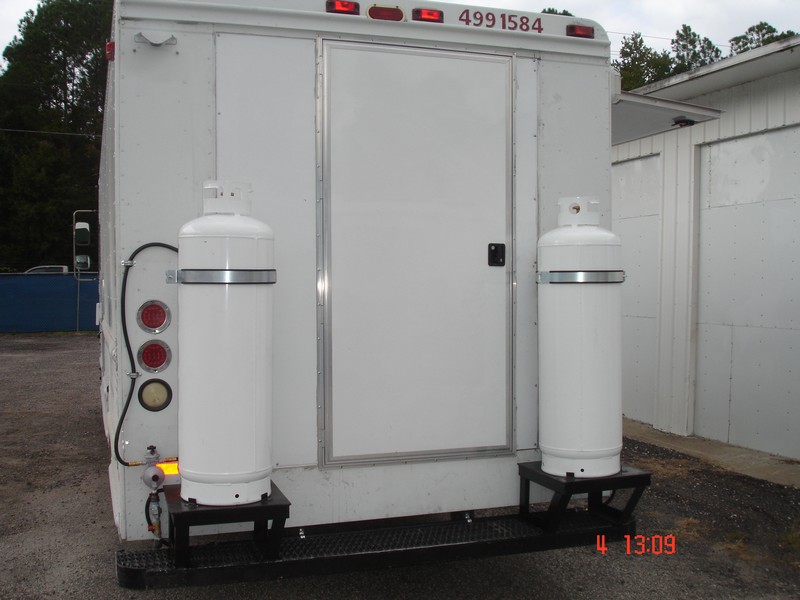Running a successful food truck business is about more than just great recipes; it’s about building a reliable and safe mobile kitchen. One of the most critical, yet often overlooked, components is how you secure your 100 lb propane tank. A loose propane tank is a significant safety hazard and a violation of most mobile vending codes. This comprehensive guide will walk you through everything you need to know about selecting and installing a secure 100 lb propane tank holder for your food truck, ensuring your operation is both safe and compliant. We’ll dive into the key features, material choices, and installation best practices that every owner-operator needs to understand.
Why a Dedicated Propane Tank Holder is Non-Negotiable
You wouldn’t drive your truck with unsecured cooking oil containers sliding around, and your propane tank deserves the same level of caution. A 100 lb propane tank is heavy, weighing over 170 pounds when full. In the event of a sudden stop or collision, an unsecured tank becomes a dangerous projectile. Beyond the immediate physical danger, it can damage gas lines, leading to leaks and potential fires.

Furthermore, local fire marshals and health department inspectors will check your propane tank setup during permitting and routine inspections. An improperly secured tank can result in fines or even having your business shut down until the issue is fixed. Investing in a high-quality, purpose-built propane tank holder is not an optional upgrade; it’s a fundamental requirement for operational safety and legal compliance. It protects your investment, your customers, and your livelihood.
Key Features to Look for in a 100 LB Propane Tank Holder
Not all holders are created equal. When shopping for a secure 100 lb propane tank holder, you need to look for specific design and construction elements that guarantee performance and durability.
Material and Construction: The Backbone of Security
The best holders are constructed from heavy-duty, corrosion-resistant materials. Powder-coated steel is a popular choice for its strength and resistance to rust. The coating should be thick and even, protecting the metal from moisture, road salt, and cleaning chemicals. The gauge, or thickness, of the steel is also crucial. A holder made from thin, flimsy metal will not withstand the rigors of daily travel and will fatigue over time, compromising its holding power.
Locking Mechanism: Keeping Your Tank in Place
A simple strap is not enough. Look for a holder that features a robust, bolt-down base plate and a heavy-duty locking ring or band that encircles the tank’s collar. This type of mechanism prevents the tank from lifting, shifting, or rotating. The lock itself should be made of hardened steel and, ideally, be weather-resistant to prevent seizing. Some models offer integrated lock-and-key systems for an added layer of security against theft.
Mounting System: A Solid Foundation
How the holder attaches to your truck is just as important as the holder itself. It must be designed for secure mounting to a steel surface. Look for models with pre-drilled holes that allow for through-bolting. Self-tapping screws are generally not sufficient for this critical application. The holder should be mounted to a structural part of the truck’s frame or body, not just to the thin sheet metal of an exterior panel.
Comparing the Top Propane Tank Holder Options
To help you make an informed decision, here’s a comparison of common holder types based on key criteria important for food truck owners.
| Feature | Basic Strap Holder | Heavy-Duty Locking Ring Holder | Custom-Welded Cage |
|---|---|---|---|
| Security Level | Low | High | Very High |
| Ease of Installation | Easy | Moderate | Difficult (Requires Welder) |
| Durability | Moderate | High | Highest |
| Cost | $ | $$ | $$$ |
| Inspection Compliance | Often Fails | Typically Passes | Passes |
As the table illustrates, a heavy-duty locking ring holder offers the best balance of security, durability, and value for most food truck setups. It is specifically engineered to meet the demands of a mobile environment.

Expert Insight: The Importance of Proper Installation
We consulted with Michael Torres, a certified commercial vehicle safety advisor with over 15 years of experience, on best practices. “The most common mistake I see,” Torres notes, “is undermounting. Owners will use fasteners that are too short or mount the bracket to a non-structural part of the body. The force exerted by a 170-pound object in a 20-mph impact is immense. Your mounting hardware must be grade-5 or higher bolts, with large washers on the backside, going into a solid steel frame member.”
He also emphasized ventilation: “Always ensure your propane tank holder is installed in a well-ventilated area, away from direct heat sources and electrical connections. Propane gas is heavier than air, and any leak will pool in low, enclosed spaces, creating a major explosion risk.”
Step-by-Step Guide to Installing Your Tank Holder
- Choose the Location: Select a flat, sturdy area on your truck’s frame or a reinforced part of the body, preferably in an open compartment with airflow.
- Gather Tools and Materials: You will need a drill, appropriate drill bits, a wrench set, grade-5 or higher bolts, lock washers, and nuts.
- Position and Mark: Place the empty holder in the desired location. Use a marker to indicate the drilling points through the mounting holes.
- Drill Pilot Holes: Drill holes at your marks, using a bit slightly smaller than your chosen bolts.
- Secure the Holder: Position the holder over the holes. From the opposite side, have a helper place a large washer and nut on each bolt as you thread them through. Tighten everything securely.
- Test for Stability: Before placing the tank, try to move the holder forcefully. There should be no play or wobble.
- Place and Lock the Tank: Insert the tank and secure it with the holder’s locking mechanism. Tug on the tank to confirm it is firmly held.
Frequently Asked Questions
Can I use a holder designed for a smaller tank for my 100 lb propane tank?
Absolutely not. Holders are rated for specific tank sizes and weights. Using an undersized holder is extremely dangerous and will not provide a secure fit, guaranteeing a failure during an inspection and posing a severe safety risk on the road.
How often should I inspect my propane tank holder?
You should perform a visual inspection before each day of operation. Check for any signs of rust, cracking in the welds, or loosening of the bolts. Conduct a more thorough check monthly, ensuring all components are tight and the locking mechanism functions smoothly.
Are there specific regulations for propane tanks on food trucks?
Yes, regulations are primarily governed by the NFPA 58 (Liquefied Petroleum Gas Code) and local fire codes. These codes dictate everything from tank placement and securement to line installation and shut-off valve requirements. Always check with your local authority having jurisdiction (AHJ).
What is the best way to prevent rust on a steel propane tank holder?
Purchasing a holder with a high-quality powder coat is the first step. For maintenance, periodically clean the holder with a mild soap and water solution to remove grime and road salt. If you notice any chips in the coating, touch them up immediately with a rust-inhibiting paint designed for metal.

Final Thoughts on Securing Your Fuel Source
Your food truck’s propane system is the engine of your kitchen. Securing your 100 lb tank with a professional-grade holder is one of the smartest and most responsible investments you can make. It goes beyond mere compliance—it’s about peace of mind. Knowing that your tank is safely and securely fastened allows you to focus on what you do best: serving amazing food to your customers. Don’t cut corners on safety; choose a holder built for the job and install it correctly. Your business depends on it.
Sources and Further Reading
- National Fire Protection Association. NFPA 58: Liquefied Petroleum Gas Code. https://www.nfpa.org/codes-and-standards/all-codes-and-standards/list-of-codes-and-standards/detail?code=58
- U.S. Department of Transportation. Pipeline and Hazardous Materials Safety Administration (PHMSA). “Hazardous Materials Regulations for Cylinders.” https://www.phmsa.dot.gov/hazmat-program







